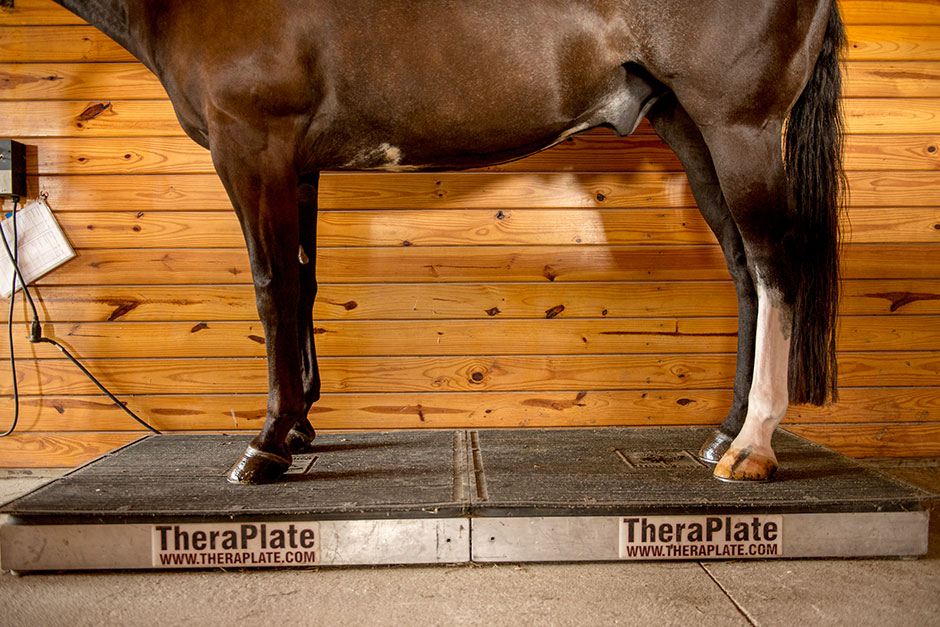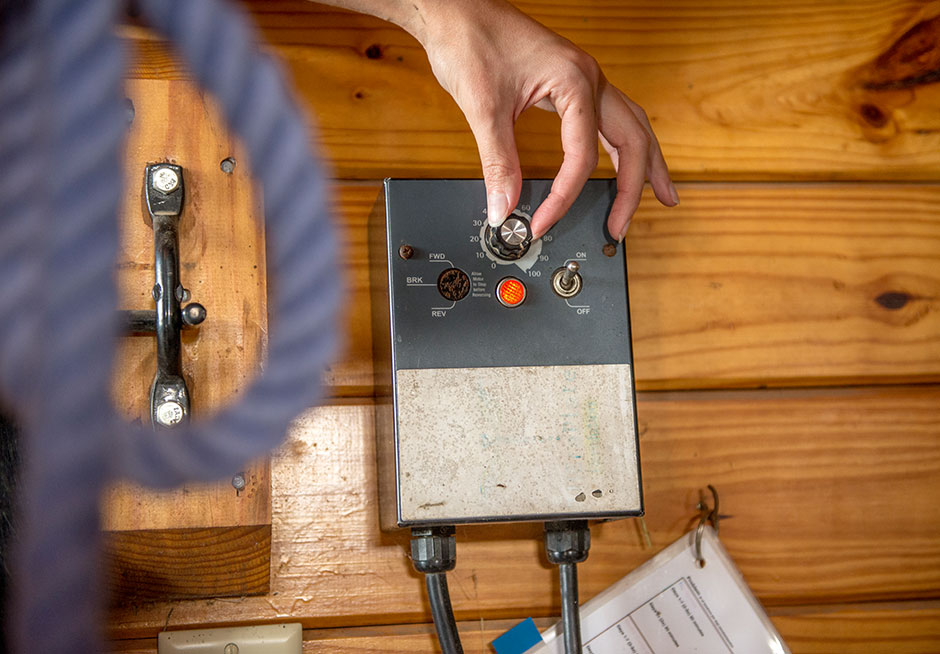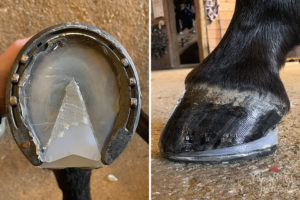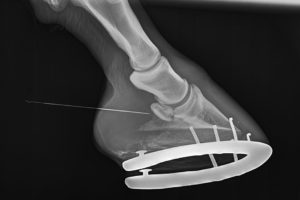For horses, foot traumas tend to require a prolonged recovery time due to the level of difficulty in treating. A human would be ordered to stay off that foot for a period of time, but that’s not possible with a horse! So after Dexter suffered from a collateral ligament injury, I wanted to do everything I could to help promote healing and longevity. This led to hours of research and conversations with my vet about alternative therapies that would compliment his procedures without breaking the bank. One option I kept coming back to was the TheraPlate. My vet agreed that this could be a viable option to try without any adverse effects.
Why TheraPlate
- Increased Circulation. The TheraPlate caught my eye for its small, circular movements that stimulate muscle contractions and increase circulation.
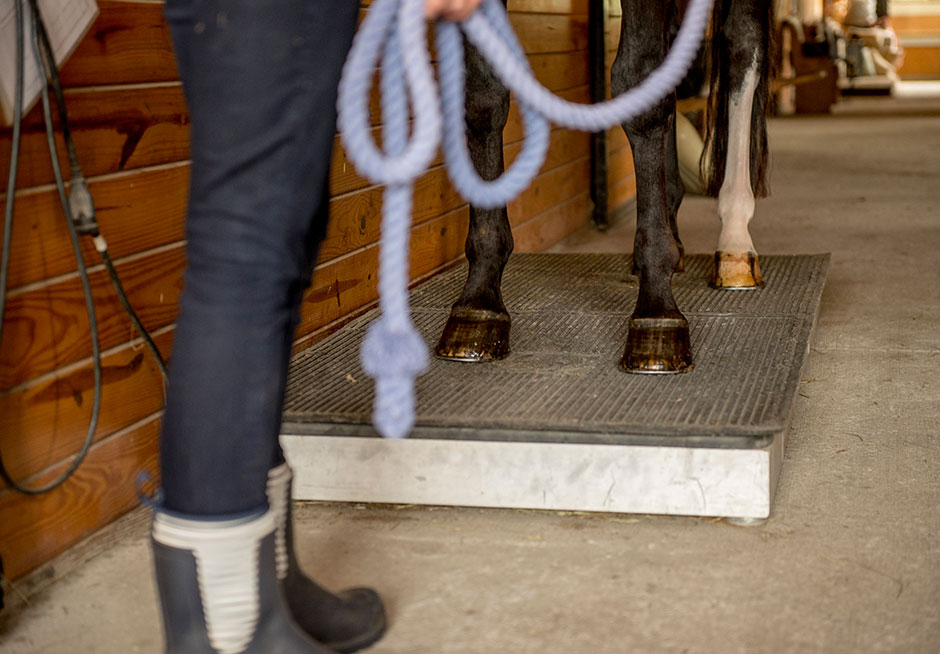
- Reduced Stress. The TheraPlate quickly became Dexter’s “happy place” from his stall and gave him something different to do. Each time he was on it, he was so relaxed he relieved himself (not the easiest to clean up!).
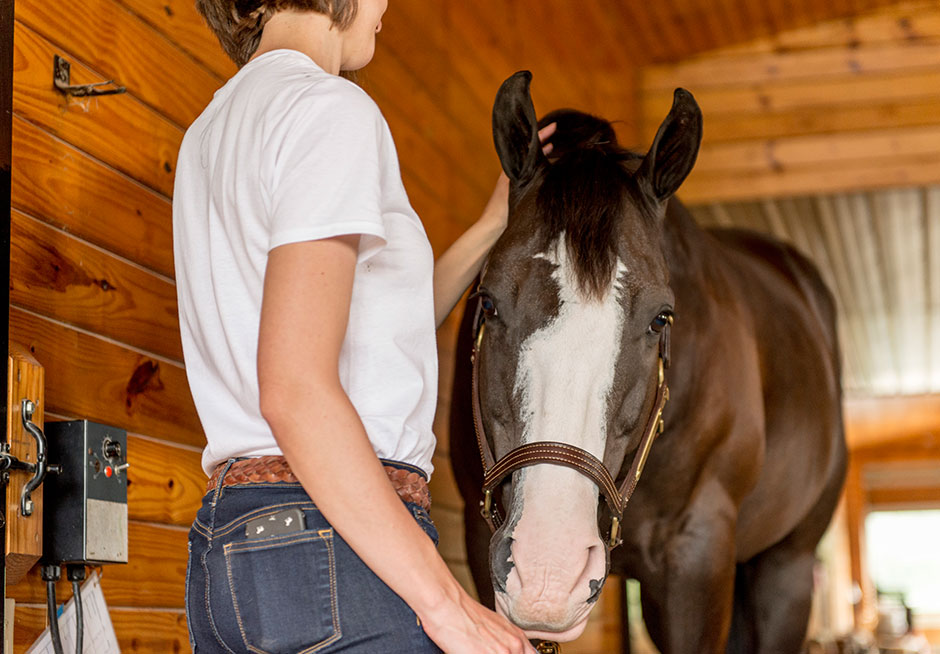
- Maintaining Muscle Mass. Even though Dexter was on stall rest, the TheraPlate helped to keep him in tip top shape so that going back to work in the future would be easier.
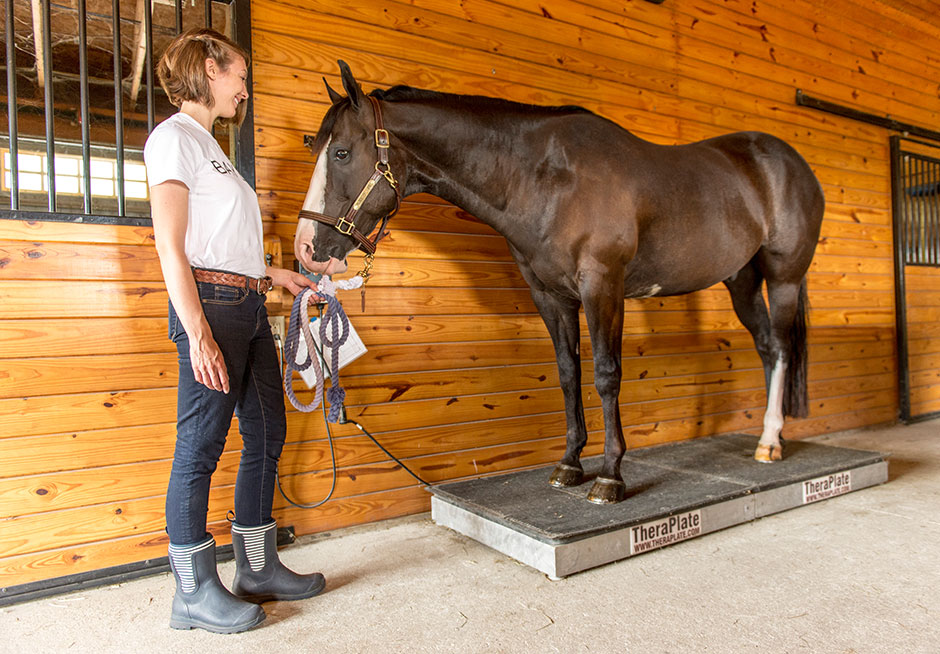
My TheraPlate Review
TheraPlates are hard to find. Renting one or taking Dexter to a rehab facility was out of the question in my case due to budget constraints, so I looked into other options. This is where having connections comes in handy as I was able to work out a deal with a dressage friend to use her TheraPlate for 45 days.
For Dexter, I chose to follow a treatment protocol for hoof soreness/navicular. This involved using the TheraPlate 3 times a day. Each 20 minute session was the same: 2.5 minutes at setting 100, 6.5-11.5 minutes at setting 60/70, 10 minutes at setting 100 and 2.5 minutes at setting 40/50. I really appreciated that the TheraPlate came with a handy chart for a variety of ailments to make coming up with a treatment plan easy.
The first week proved challenging to keep Dexter still. Especially at the higher frequencies, he tended to want to walk forward or back off the TheraPlate altogether. Once he became comfortable though, I had to drag him off the unit at the end of treatment.
After 45 days, we jogged Dexter and noticed a significant difference in his soundness. However, because my vet performed PRP before we started with the TheraPlate, it’s difficult to determine whether Dexter’s results were a direct impact of using the TheraPlate or based on his natural degree of healing. His lameness also returned a few weeks after we ended treatment.
Based on the location of Dexter’s injury, the only way of knowing for sure whether the TheraPlate had helped to heal his ligament was to do a follow-up MRI since the damage can not be monitored via x-rays or ultra sounds. The cost of an MRI is quite steep, so this was not something I could realistically afford on a regular basis to track what treatments worked or didn’t.
If you have easy access to a TheraPlate like I did, I would definitely recommend giving it a try for combating everyday wear and tear. I’m still not convinced that it can be used for tissue repair alone. But, if given the opportunity all over again, I still would have chosen adding it to Dexter’s rehab plan as it provided many other noticeable benefits.

